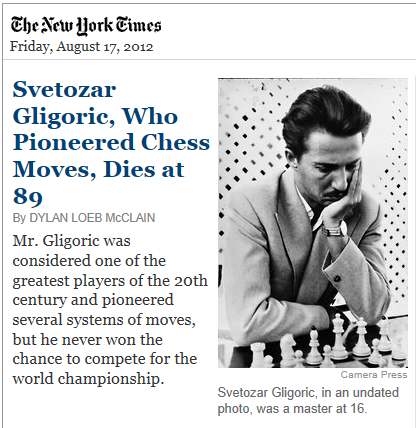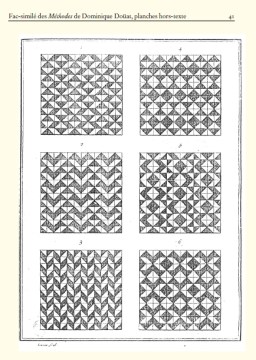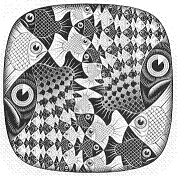My Personal Thorny Crown
Kirk Varnedoe, 57, art historian and former curator of the Museum of Modern Art, died Thursday, August 14, 2003.
From his New York Times obituary:
" 'He loved life in its most tangible forms, and so for him art was as physical and pleasurable as being knocked down by a wave,' said Adam Gopnik, the writer and a former student of his who collaborated on Mr. Varnedoe's first big show at the Modern, 'High & Low.' 'Art was always material first — it was never, ever bound by a thorny crown of ideas.' "
For some background on the phrase "thorny crown of ideas," see the web page
Understanding.
The phrase "thorny crown of ideas" is also of interest in the light of recent controversy over Mel Gibson's new film, "The Passion."
For details of the controversy, see Christopher Orlet's Aug. 14 essay at Salon.com,
Mel Gibson vs. "The Jews"
For a real "thorny crown of ideas," consider the following remarks by another art historian:
"Whether or not we can follow the theorist in his demonstrations, there is one misunderstanding we must avoid at all cost. We must not confuse the analyses of geometrical symmetries with the mathematics of combination and permutation….
The earliest (and perhaps the rarest) treatise on the theory of design drives home this insight with marvellous precision."
— E. H. Gombrich, 1979, in
The Sense of Order
This is perhaps the most stupid remark I have ever read. The "treatise on the theory of design" that Gombrich refers to is
- Dominique Douat, Methode pour faire une infinité de desseins differents avec des carreaux mipartis de deux couleurs par une ligne diagonale : ou observations du Pere Dominique Douat Religieux Carmes de la Province de Toulouse sur un memoire inséré dans l'Histoire de l'Académie Royale des Sciences de Paris l'année 1704, présenté par le Reverend Sebastien Truchet religieux du même ordre, Academicien honoraire, imprimé chez Jacques Quillau, Imprimeur Juré de l'Université, Paris 1722.
This is the title given at the web page
Truchet & Types:
Tiling Systems and Ornaments,
which gives some background.
Certain of the Truchet/Douat patterns have rather intriguing mathematical properties, sketched in my website Diamond Theory. These properties become clear if and only we we do what Gombrich moronically declares that we must not do: "confuse the analyses of geometrical symmetries with the mathematics of combination and permutation." (The verb "confuse" should, of course, be replaced by the verb "combine.")
What does all this have to do with
Mel Gibson vs. "The Jews" ?
As jesting Pilate seems to have realized, whenever Jews (or, for that matter, Christians) tell stories, issues of truth may arise. Such issues, as shown by current events in that damned Semitic Hell-on-Earth that used to be referred to as "the Holy Land," can be of life-and-death importance.

Scene from
The Passion
The Roman soldiers may have fashioned a physical crown of thorns, but the Jews are quite capable of fashioning a very uncomfortable crown of, as Gopnik says, "ideas."
Here is an example.
"Ernst Hans Josef Gombrich, who as an author went by the name E. H. Gombrich, was born in Vienna in 1909….
The Gombrich family was Jewish, but his parents felt this had no particular relevance. In later years Mr. Gombrich said that whether someone was Jewish or not was a preoccupation for the Gestapo."
— Michael Kimmelman's obituary for Gombrich in the New York Times. Kimmelman is chief art critic for the New York Times and author of the Times's Aug. 15 Varnedoe obituary.
The web page Understanding cited above contains a link to
Pilate, Truth, and Friday the Thirteenth,
a page combining some religious remarks with a quotation of an extremely patronizing and superficial reference to my own work (and, in passing, to Truchet/Douat patterns).
This reference, and the above-quoted remark by Gombrich, constitute my own modest claim to what the Jew Gopnik jokingly calls a "thorny crown of ideas."
To me it is no joke.
This partly accounts for the rather strained quality of the attempt at humor in a web page I put together yesterday in response to Varnedoe's obituary:
Fahne Hoch, Macbeth!
Another reason for the strained quality is my being struck by the synchronicity of reading Varnedoe's obituary shortly after I had done a journal entry related to the death in July of an earlier Museum of Modern Art curator. Like Robert A. Heinlein, I think the God of the Jews is a lousy deity and an even worse father figure. I do, however, believe in synchronicity.



























